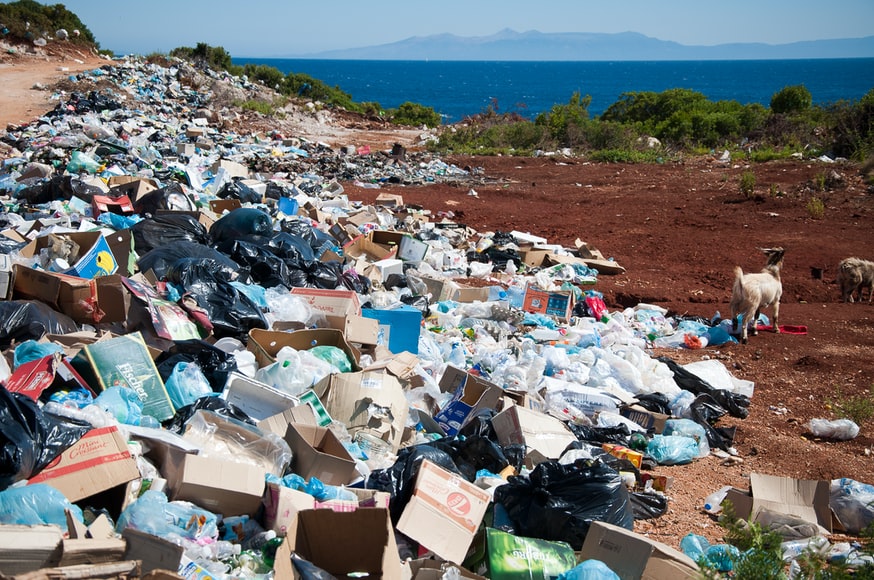What Are The Environmental Consequences Of Landfills?
Sites that house garbage dumps are unappealing. In addition to the eyesore of ever-increasing rubbish piles, landfills are a major cause of air and are related with a slew of problems. Garbage dumped in landfills decomposes very slowly and will continue to be an issue for several generations.
Toxins, leachate, and greenhouse gas emissions are the three main drawbacks of landfilling. Bacteria included in organic waste are responsible for decomposing the trash. Weak acidic chemicals produced by the decaying trash interact with waste liquids to produce leachate / landfill gas.
Some unintended consequences include nauseating odours and views, as well as infestations of rats and seagulls, which generate their own waste concerns.
Toxins
Toxic compounds are present in many materials that are destined for the landfill. An example of electronic trash is provided here. Mercury, mercury, cadmium, PVC, solvents, acids, and lead are just a few of the toxic materials found in electronic waste, such as televisions, computers, and other electronic goods. As these pollutants accumulate in our water and soil, they pose a long-term threat to the environment.

Leachate
In a landfill, leachate is just the liquid that forms when garbage decomposes and water washes through it. This hazardous liquid can damage land, groundwater, and waterways if it is ingested.
Massive quantities of environmentally damaging compounds are present in landfill. When plastics like PVC as well as other materials break down, they release harmful compounds.
The developed world’s fastest rising trash segment is e-waste. Due to its toxicity, landfills are a common destination for the most hazardous waste stream. Acids and solvents can be found in electronic trash, as well as heavy metals.
During the time it takes to fill a landfill cell, the contents are exposed to rain. Leachate, a foul-smelling liquid containing ammonia and various poisonous salts, is created when rainwater filters through a landfill and dissolves but also flush 5-7 percent of such poisons with it.
Many Olympic-sized swimming pools containing leachate can be produced by a single dump site each year, depending on rainfall. In order to prevent contamination for land, groundwater, and waterways, leachate is collected then recirculated into landfill cells. In landfill, some of the leachate is reabsorbed, but the majority seeps through again and again, accumulating new pollutants.
Gases That Contribute To Global Warming
Landfills Are A Major Source Of Climate-Changing Greenhouse Gases.
As a general rule, organic waste such like food scraps or green garbage is compacted and covered when it is dumped in the trash. An anaerobic breakdown occurs as a result of this process. Methane, a more potent greenhouse gas than carbon dioxide, will eventually be released as a result of this process.
Methane makes about 35-55% of landfill gas, whereas carbon dioxide makes up 30-44%. Additionally, methane can be harmful if concentrations become too high. This has far-reaching ramifications for warming. Many of these issues can be eliminated by composting your food leftovers and green waste in some kind of a compost bin.
Methane’s greenhouse effect is significantly harsher within first twenty years of emission—between 84 to 100 times stronger than carbon dioxide. And when it comes to reducing greenhouse gas emissions, the next 10 to 20 years are critical.
As a result, what’s the average amount of methane produced by an average landfill? Considerably. Enough to run a power plant, in fact.
Nearly 1.7 million square metres of methane are produced each month by a landfill that feeds a half-million people. A generator that powers around 10,000 houses is powered by an average of 85% of the gas gathered and burned. While landfill gas power is commonly referred to as renewable energy generation by plant operators and governments, it is neither a long-term or environmentally benign method of production. Methane, like oil and coal, produces carbon dioxide when burned.
Waste management began with landfills, but we’ve started to recognize that these places are bad for our world in the contemporary day. Reasons for this include:
Taxpayers bear the brunt of the costs associated with landfills.
The rotting garbage in the earth produces high volumes of methane pollutants such as carbon dioxide. Global warming is accelerated by the emission of greenhouse gases like these.
Toxic waste is disposed of in landfills, where it slowly seeps into the ground and water supply. An enormous environmental danger is created.
Included are mercury, arsenic, PVC, acids, lead, other compounds often found in household cleaning products.
Our waterways are vulnerable to contamination from leachate, a hazardous liquid that is generated when rainfall filters through landfill debris.
Gases produced by landfills provide a fire hazard. The primary gas produced is methane, which is highly flammable. To combat fires, firefighters often use a smoke foam rather than water because they don’t know what chemicals are in the waste, which increases the landfill’s chemical footprint.
Waste that normally decomposes quickly in landfills, such as vegetables and fruit, will take much longer in landfills since there is no oxygen in the ground. Some dump materials will not decompose for a million years or more! As long as the landfill exists, it will continue to release hazardous and undesired gases, which necessitates constant management of the area.




